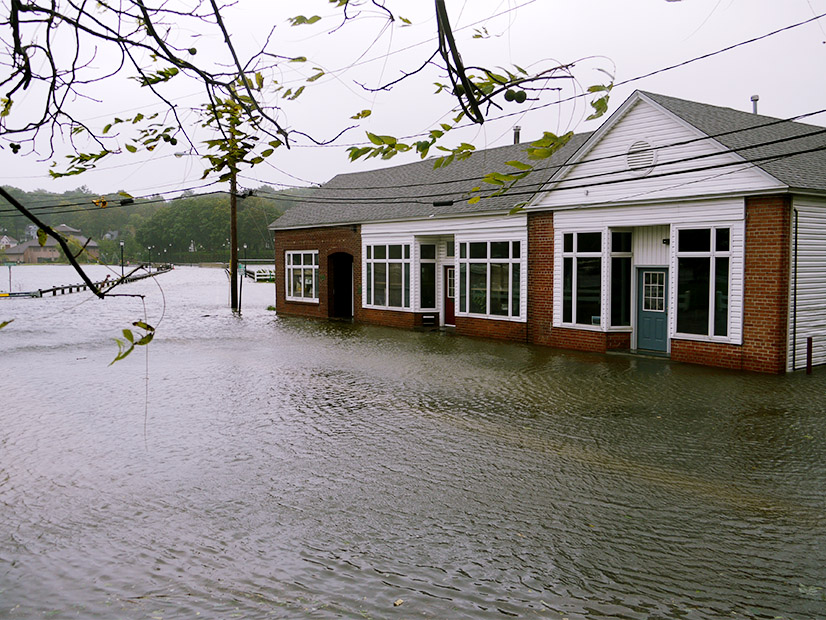
A flood in a substation that damaged multiple pieces of equipment could be the future for many utilities as the grid adapts to climate change, according to a new Lessons Learned report released by NERC last week.
“Substation Flooding Events Highlight Potential Design Deficiencies,” one of six reports published last Wednesday, did not disclose details of the incident such as the date, location, or even the utility and regional entity involved. This is a common practice with NERC’s Lessons Learned documents, which are intended to “provide industry with … information that assists [it] with maintaining the reliability of the bulk power system” rather than to shame individual companies.
The incident began with a heavy storm that dropped nearly 6 inches of rain and hail on a 230-kV transformer station over two and a half hours. During the sudden influx, which was beyond any expectations of the facility’s designers, about 8 inches of water collected in a relay room in the basement of the substation control building, submerging “numerous [250-V DC] control equipment connections.”
Compounding the heavy rainfall was the lack of suitable pumping capacity. While sump pumps were in place at the facility, staff found that they could not keep up with the pace of the flooding, and additional pumps could not be installed for several hours. Even the existing pumps were undermined by the placement of their outlets, which were so close to the substation that staff realized the water they pumped out was “flowing back into the basement through cable trays.”
The transmission owner’s staff were not totally unprepared for the events: NERC noted that facility personnel had relocated “critical power system equipment” above the grade as recommended in a previous Lessons Learned report on a similar flooding incident. As a result, no load loss was reported as a result of the event, and no system operating limits were exceeded during the flooding.
However, enough equipment was left submerged in the basement to cause multiple problems with circuit breakers and bring almost 500 MW of generation offline.
Five breaker issues were reported: Two breakers operated on false failure inputs and three on false trip inputs. The first failure input led to the loss of one circuit and two generating units connected to the line terminal; after multiple attempts to restore the circuit, the equipment had exceeded the number of reclosing attempts and could not be reclosed without an inspection.
The second false failure input resulted in the loss of one circuit and four generation units. No generation or transmission facilities were lost because of the false trip inputs, and the circuits were returned to service just over an hour after the event began. Once additional pumps had been brought online, the pump outlets were moved so the water would not drain back into the basement, and heating and drying equipment were brought into the basement.
NERC’s report noted that the TO is already taking steps to address the shortcomings revealed by the incident, including a complete overview of the drainage system on-site and a commitment to move all critical equipment above grade by 2023. The TO is also planning an extent-of-condition investigation to determine if similar issues exist at other transmission stations.
The report’s authors suggested that other TOs take similar steps by investigating whether suitable precautions have been taken at transmission stations that were previously known to be susceptible to flooding, as well as whether stations that were previously considered safe may now be in danger. NERC also recommended that facility owners determine how water might affect sensitive equipment if the flooding measures fail and make sure they have plans for handling rain when maintenance is underway on vital systems.


